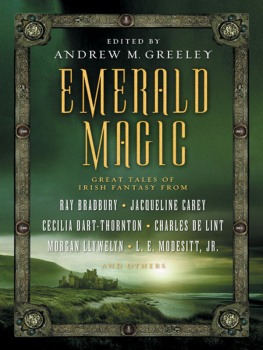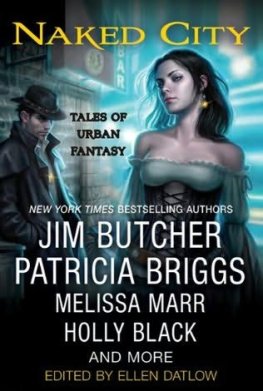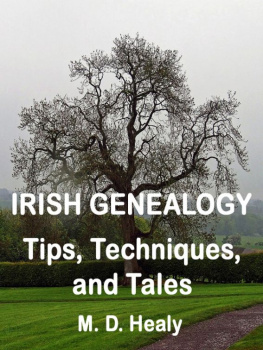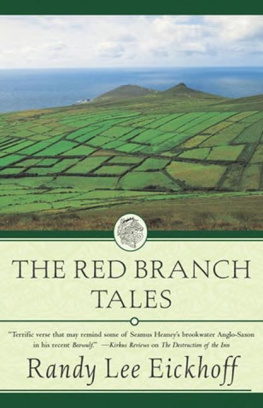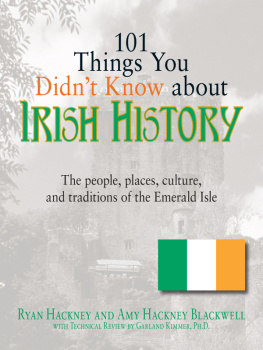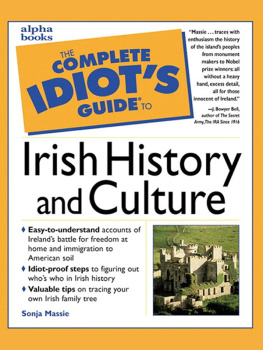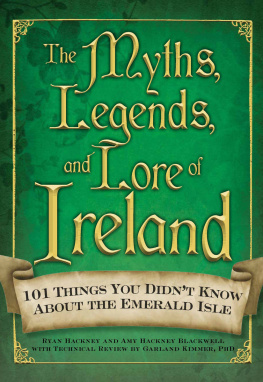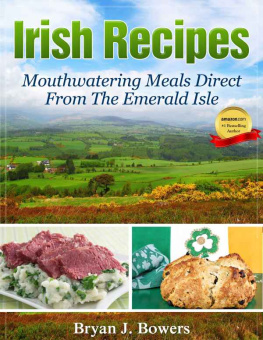Emerald
Magic
Also by Andrew M. Greeley
from Tom Doherty Associates
All About Women
Angel Fire
Angel Light
Contract with an Angel
Faithful Attraction
The Final Planet
Furthermore!: Memories of a Parish Priest
God Game
The Priestly Sins
Star Bright!
Summer at the Lake
White Smoke
Sacred Visions (editor with Michael Cassutt)
The Book of Love (editor with Mary G. Durkin)
Bishop Blackie Ryan Mysteries
The Bishop and the Missing L Train
The Bishop and the Beggar Girl of St. Germain
The Bishop in the West Wing
Nuala Anne McGrail Novels
Irish Gold
Irish Lace
Irish Whiskey
Irish Mist
Irish Eyes
Irish Love
Irish Stew!
The OMalleys in the Twentieth Century
A Midwinters Tale
Younger than Springtime
A Christmas Wedding
September Song
Second Spring
Emerald
Magic
GREAT TALESof
IRISH FANTASY

Edited by Andrew M. Greeley

This is a work of fiction. All the characters and events portrayed in these stories are either fictitious or are used fictitiously.
E MERALD M AGIC : G REAT T ALES OF I RISH F ANTASY
Copyright 2004 by Andrew M. Greeley Enterprises, Ltd., and Tekno Books All rights reserved, including the right to reproduce this book, or portions thereof, in any form.
This book is printed on acid-free paper.
A Tor Book
Published by Tom Doherty Associates, LLC
175 Fifth Avenue
New York, NY 10010
www.tor.com
Tor is a registered trademark of Tom Doherty Associates, LLC.
Library of Congress Cataloging-in-Publication Data
Emerald magic : great tales of Irish fantasy / edited by Andrew M. Greeley.1st ed.
p. cm.
A Tom Doherty Associates book.
ISBN 0-765-30504-6
1. Fantasy fiction, EnglishIrish authors. 2. IrelandFiction. I. Greeley, Andrew M., 1928
PR8876.5.F35E44 2004
823'.0876608dc22
2003061477
First Edition: February 2004
Printed in the United States of America
0 9 8 7 6 5 4 3 2 1
Acknowledgments

Introduction, copyright 2004 by Andrew M. Greeley.
Herself, copyright 2004 by Diane Duane.
Speir-Bhan, copyright 2004 by Tanith Lee.
Troubles, copyright 2004 by Jane Yolen and Adam Stemple.
The Hermit and the Sidhe, copyright 2004 by Judith Tarr.
The Merrow, copyright 2004 by Elizabeth Haydon.
The Butter Spirits Tithe, copyright 2004 by Charles de Lint.
Banshee, copyright 1986 by Ray Bradbury. First published in Womans Own, February 1986. Reprinted by permission of the author and his agents, the Don Congdon Agency.
Peace in Heaven? copyright 2004 by Andrew M. Greeley.
The Lady in Grey, copyright 2004 by Jane Lindskold.
A Drop of Something Special in the Blood, copyright 2004 by Fred Saberhagen.
For the Blood Is the Life, copyright 2004 by Peter Tremayne.
Long the Clouds Are over Me Tonight, copyright 2004 by Cecilia DartThornton.
The Swan Pilot, copyright 2004 by L. E. Modesitt, Jr.
The Isle of Women, copyright 2004 by Jacqueline Carey.
The Cat with No Name, copyright 1989 by Morgan Llywelyn. First published in The Irish Times. Reprinted by permission of the author.
For Colm OMuircheartaigh,
Up Kerry!
Contents


W hen I was a small one,my mother told me stories about the little people in Ireland, stories she had heard from her own mother. I dont think she believed the stories, at least not that much. Her mother before may have told them at least half in fun. Even if they were not altogether true, they were good stories. So I learned early on in life about the characters that swirl around Dublins fair city in Diane Duanes first story in this collectionleprechauns and pookas and silkie and banshee and the rest of them. I was surprised that they had all moved to Dublin, but so, it seems, has everyone else. Indeed the largest number of those who speak The Irish as their first language now live in Dublin. The little people, as my mother called them, go wherever the Irish speakers go.
My mom also explained where the faerie came from. They were the moderate middle angels in the time of the great war in heaven between Michael and his angels and Satan and his angels.When the matter was settled, and the bad angels went off to hell, there was some discussion as to where the independents should be sent. They had not fought against the Lord God, so they didnt deserve hell, but they hadnt been on His side either, so they couldnt stay in heaven. The decision was they would be sent to earth, to a place of their own choosing. They opted for Ireland: it was, after all, the place on earth most like heaven! They had the Emerald Isle all to themselves until the Celts came, a variety of humans for whom they didnt have much affection, so they retreated to the west of the island and to their caves and forts and hills and islands in the river and other hangouts. Their situation was made worse when the monks came and replaced the druids. The latter were properly afraid of them, but the Catholic clergy vigorously denied their existence and denounced them from the altars. The Sidhe (whom I call the Shee because few can be expected to cope with the mysteries of Irish spelling) decided that it was not prudent to take on the priests directly and withdrew farther into the ground and into mystery and magic.
In my own story in this collection I try to make peace between the two angelic hosts, an exercise of fantasy, I hasten to add, not theology (lest I be delated to the Holy Office!).
However, at one time the greatest concentration of them was in the County Mayo, whence came all four of my grandparents. Indeed after the famine, it was said, there were more faerie in Mayo than there were humans. So it is fitting that I write this introduction.
Do I believe that one could find the faerie in Mayo today? Well, to tell the truth, Ive never looked for them and probably never will, and myself without any psychic sensitivity at all, at all. A prudent man, I would not venture into faerie fields or faerie forts or faerie mounds. You can never tell what you might find. Nor will I spend much time in the front room of a Mayo cottage, which by tradition is kept neat and empty except for wakes because on their wild rides around the County, the Troop seems to dash through the front rooms. Ive never heard the reason for this belief. Indeed even today, many people are unwilling to talk about the faerie because it is bad luck.
Hence the various euphemisms for them in addition to my moms little people. They are variously called they, the gentry, and the Troop. Sometimes people dont call them anything, but merely wink and nod in the general direction of nowhere.
One of my sociological mentors, Everett C. Hughes, told a story about his research in rural Quebec. He asked an old man whether he believed in the faerie. Theyre not around anymore, the man replied, but they were in my grandmothers day.
Next page
